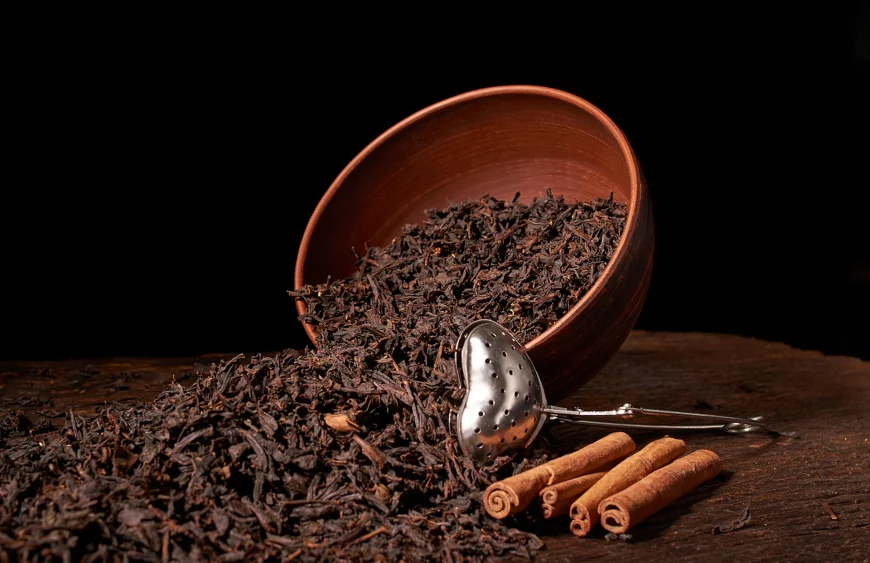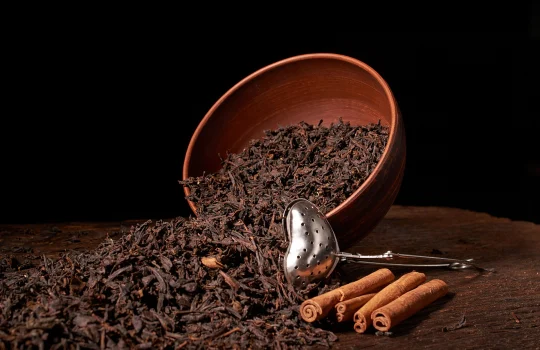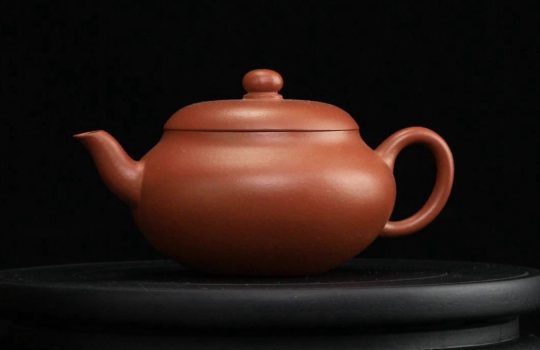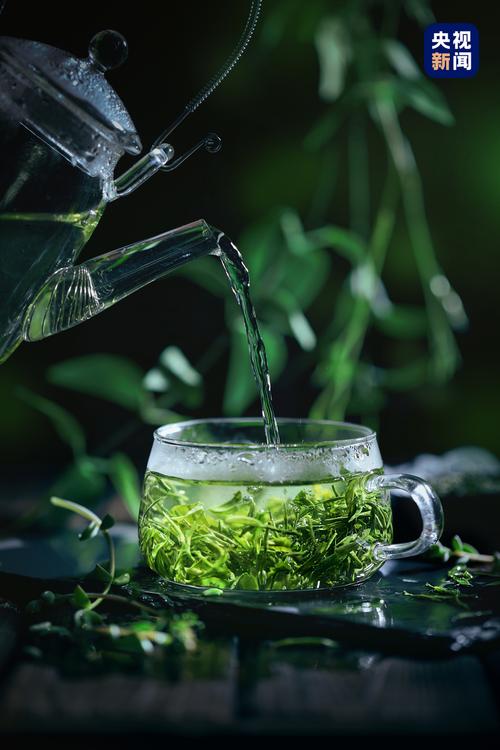1. Background of Tibetan Tea
◇ The Treasure of the Plateau
Tibetan tea, esteemed as the ‘Treasure of the Plateau,’ has long been celebrated for its ability to ‘digest rich, meaty fare and alleviate the heat from barley.’ A saying even persists: ‘One may go three days without rice, but never a single day without tea.’ This fully demonstrates Tibetan tea’s indispensable status in plateau regions and its rich nutritional content. Moreover, Tibetan tea, a beverage deeply cherished by ethnic minority communities, is not only an essential part of daily life for Tibetans but also carries profound historical and cultural significance.
◇ The History and Culture of Tibetan Tea
Due to variations across historical periods and regional customs, Tibetan tea has been known by numerous names, such as Da Cha (Large Tea), Ma Cha (Horse Tea), Wu Cha (Black Tea), and Hei Cha (Dark Tea). This tea, originating from high mountains above 1,000 metres, is meticulously crafted using uniquely mature leaves and red tea leaves through an ingenious specialised process, establishing it as the epitome of fully fermented teas. Its deep brown infusion not only symbolises the passage of time but also embodies the profound sentiments of the plateau’s inhabitants.
2. Health Components and Benefits of Tibetan Tea
◇ Rich Nutritional Profile
Tibetan tea, a beverage held in high esteem across the plateau, not only carries profound historical and cultural significance but has also been found through modern medical research to contain abundant health-promoting components. In the high-altitude, frigid climate of the Qinghai-Tibet Plateau, residents’ diets rely heavily on high-fat, high-sugar foods to adapt to the environment. Tibetan tea serves as an indispensable beverage to balance greasiness and supplement vitamins. As tea is not cultivated in these regions, Tibetan tea is now celebrated as the staple tea of the Tibetan people. Modern medical research further confirms that Tibetan tea, fermented through a specialised, prolonged process, contains nearly 500 beneficial organic compounds and approximately 700 aromatic compounds. It is also rich in over 15 minerals, including phosphorus, potassium, magnesium, and selenium.
◇ Counteracting Altitude Sickness
Following full fermentation, Tibetan tea retains its nutritional components and trace elements. These elements significantly support the growth and function of the red blood cell system, comprehensively replenishing the raw materials essential for red blood cell development. Additionally, Tibetan tea possesses anti-radiation and anti-hypoxia properties, effectively improving blood circulation and enhancing oxygen-carrying capacity. This provides comprehensive protection for red blood cells and haemoglobin, effectively counteracting altitude sickness.
◇ Prevention of Mouth Ulcers
Tibetan tea, a warm-natured beverage, holds a unique position within traditional Chinese medicine theory. Regular consumption effectively regulates the body’s internal circulation, fluid balance, and moderates internal heat. From a Western medical perspective, Tibetan tea is a treasure trove of essential vitamins. Furthermore, rinsing the mouth with Tibetan tea provides deep cleansing of the oral environment, offering robust support in preventing mouth ulcers.
◇ Weight Loss Benefits
Tibetan tea, hailed as a weight-loss elixir, is gaining popularity for its distinctive slimming properties, offering renewed hope to those seeking a more slender figure. Consuming 1000 millilitres of Tibetan tea daily after meals—roughly equivalent to two bottles of mineral water—can effortlessly initiate your weight loss journey. For those with a more active autonomic nervous system, noticeable weight reduction may become apparent within a week. Maintaining the habit of drinking Tibetan tea after achieving your goal is crucial for sustaining your figure and preventing weight regain.
◇ Alleviating Constipation
Renowned for its mild and soothing nature, Tibetan tea effectively cuts through greasiness and breaks down fats. Daily consumption acts like a gentle workout for the digestive system. For constipation sufferers trying Tibetan tea for the first time, the high content of fat-soluble dietary fibre may initially increase stool volume or frequency. This is purely a natural reaction as accumulated waste is expelled and is not a cause for concern. After approximately three days of consistent consumption, bowel regularity will gradually return to normal. With long-term adherence, constipation issues will be fundamentally resolved.
◇ Promoting Restful Sleep
Tibetan tea, celebrated for its mild and soothing nature, is remarkably effective at cutting through greasiness and breaking down fats. Daily consumption feels like a gentle workout for the digestive system. Yet its benefits extend beyond digestion, harbouring a secret for restful sleep. This stems from the caffeine present in the leaves, which is quite substantial in fresh tea – up to 70mg per 100mg of tea leaves. Yet, during the purification and compounding processes of Tibetan tea, the caffeine content gradually diminishes, with only approximately 20 milligrams remaining per 100 milligrams of tea. This transformation also preserves other beneficial components within the tea, such as theanine and tea polysaccharides. Theanine plays a vital role in calming the mind and protecting brain neurons. It effectively counteracts the stimulating effects of caffeine, thereby achieving the dual benefits of comfortable consumption and restful sleep.





